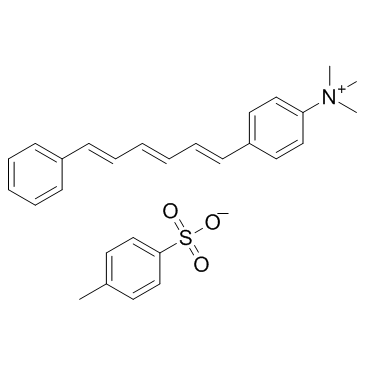TMA-DPH: a suitable fluorescence polarization probe for specific plasma membrane fluidity studies in intact living cells.
J G Kuhry, P Fonteneau, G Duportail, C Maechling, G Laustriat
Index: Cell Biophys. 5 , 129, (1983)
Full Text: HTML
Abstract
Fluorescence intensity measurements and fluorescence microscopy data showed that TMA-DPH (trimethylammonium diphenylhexatriene), a cationic derivative of the fluorescence polarization probe DPH, has a considerably different behavior in L929 cultured cells than does its parent molecule. In contrast to DPH, it incorporates very rapidly in the plasma membranes of the treated cells, and remains specifically localized on the cell surface for at least 25 min. It can therefore be recommended for specific plasma membrane fluidity measurements in whole living cells. No relevant information about the localization of the probes could be obtained by other techniques used in parallel, namely: subcellular fractionation and fluorescence inhibition by trinitrobenzene sulfonate (TNBS).
Related Compounds
| Structure | Name/CAS No. | Molecular Formula | Articles |
|---|---|---|---|
 |
TMA-DPH
CAS:115534-33-3 |
C28H31NO3S |
|
Flow Cytometric Fluorescence Anisotropy of Lipophilic Probes...
1990-10-01 [Plant Physiol. 94 , 729, (1990)] |
|
Interaction of gentamicin polycation with model and cell mem...
2012-10-01 [Bioelectrochemistry 87 , 230-235, (2012)] |
|
Membrane fluidity and activity of membrane ATPases in human ...
2013-02-01 [Biochim. Biophys. Acta 1828 , 241-248, (2012)] |
|
Membrane perturbing properties of natural phenolic and resor...
2008-10-29 [FEBS Lett. 582 , 3607-3613, (2008)] |
|
Development of membrane lipids in the surfactin producer Bac...
2008-01-01 [Folia Microbiol. (Praha) 53 , 303-307, (2008)] |